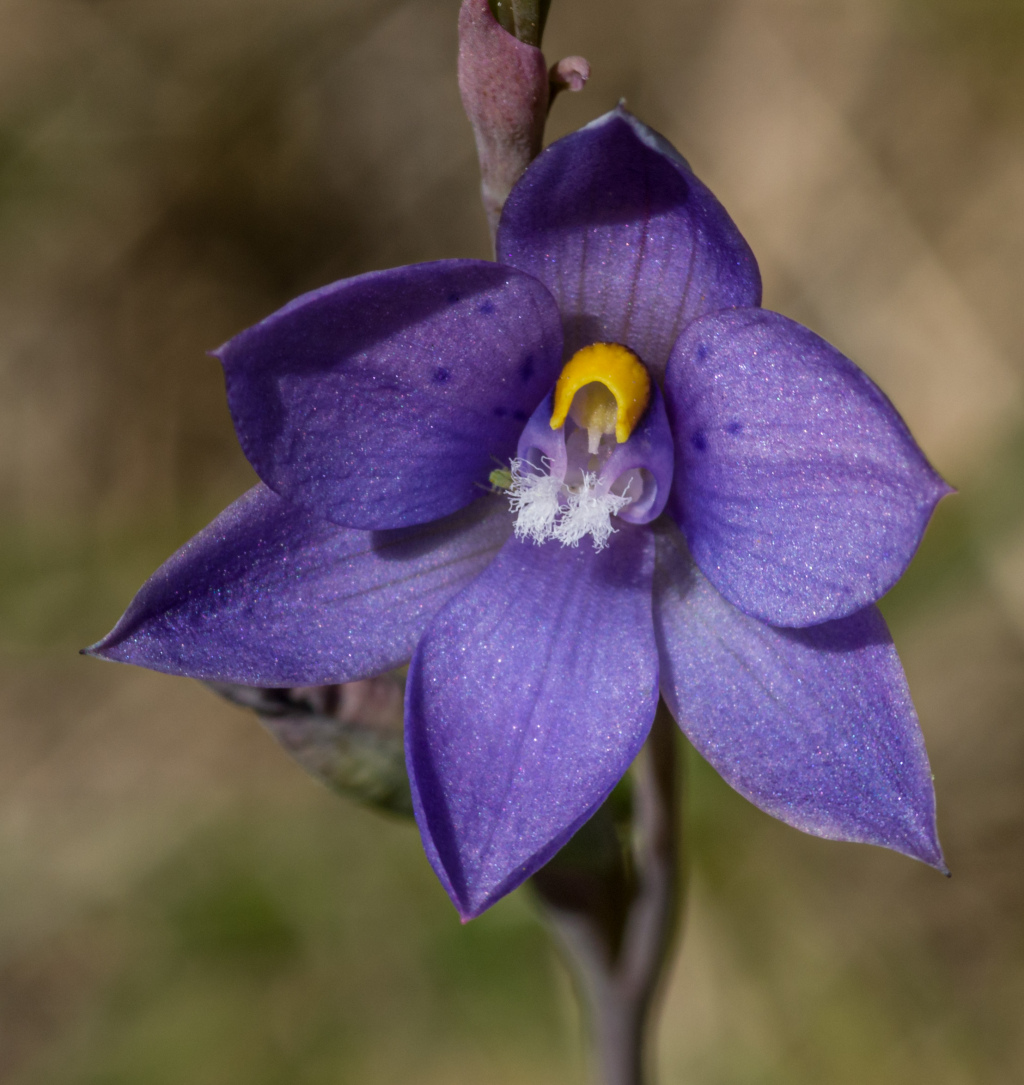Thelymitra ×truncata
R.S.RogersFlowering stem erect, straight, 7–55 cm tall, 1–4 mm diam., green to reddish. Leaf linear to linear-lanceolate, attenuate, (8–)15–30 cm long, 2–8 mm wide, fleshy, more or less flat or canaliculate, weakly to prominently ribbed abaxially, sheathing at base, green to grey-green with a reddish base. Inflorescence 1–10-flowered, usually loose. Sterile bracts 1 or 2, rarely 3. Perianth segments lanceolate to ovate, 6–18 mm long, very pale to deep blue, pinkish, rarely white, with darker spots on dorsal sepal and petals. Column slender to stoutish, 3–5 mm long, pale blue, purplish, pink or white; mid-lobe expanded into hood over the anther, tubular, directed horizontally forward, with a dark basal collar, back often inconspicuously tuberculate, apex entire or emarginate, yellow; accessory lobes absent; lateral lobes converging 0.5–1 mm long, digitiform, porrect at base then bent sharply upwards near the middle at 90 deg., each with a sub-terminal mop-like tuft of white hairs terminating in front of orifice. Anther inserted above centre of column, shortly beaked. Flowers Oct.–Dec.
LoM, Wim, VVP, VRiv, GipP, OtP, Gold, CVU, GGr, DunT, NIS, EGL, EGU, HSF, HNF, Strz, MonT, VAlp. Also SA, Qld, NSW, ACT, Tas. Uncommon but widespread in heathland, woodland and open forests from near sea-level to montane areas.
In the strict sense Thelymitra ×truncata is a natural hybrid of uncertain parentage from Myponga in South Australia. Similar hybrids can arise following hybridisation between any members of the T. pauciflora and T. ixioides complexes. Plants can be quite variable depending upon the identity of the parents involved.
 Spinning
Spinning
